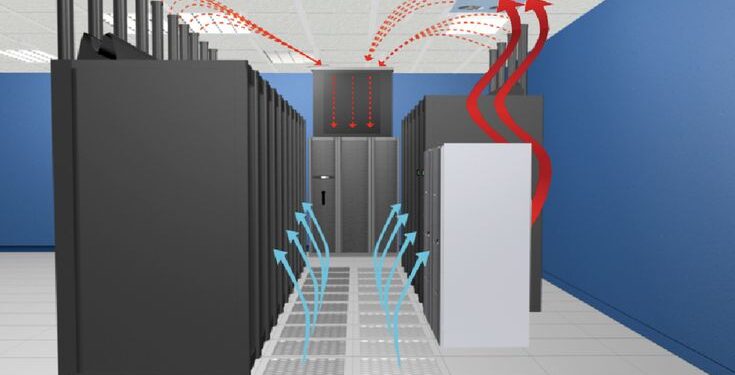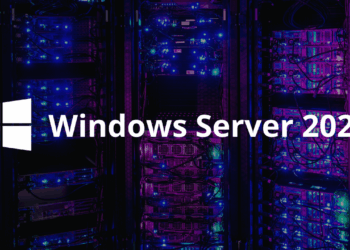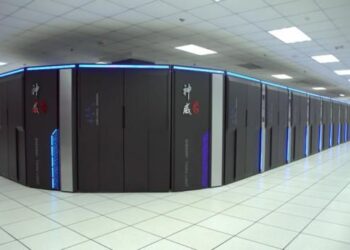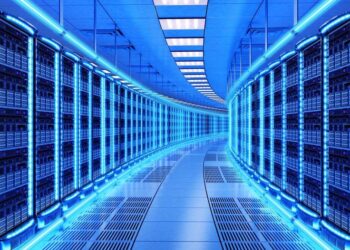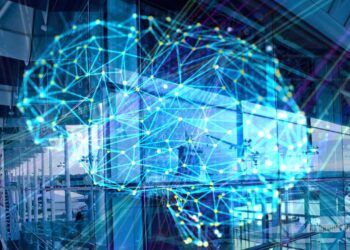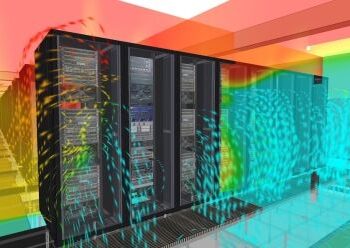In today’s rapidly evolving digital landscape, data centers are the backbone of our modern information society. As the demand for higher computational power increases, so does the need for more efficient and innovative cooling systems. This article delves into the latest advancements in server cooling technologies, exploring the evolution from traditional air cooling to sophisticated liquid and immersion methods. We will discuss the driving forces behind these innovations, the benefits and challenges they present, and the promising future of thermal management in data centers. Through this comprehensive exploration, readers will gain an in-depth understanding of how these cutting-edge solutions not only ensure the longevity and performance of servers but also contribute to energy efficiency and sustainability.
The rapid expansion of cloud computing, big data analytics, and artificial intelligence has led to a significant increase in the number of servers housed within data centers. These servers generate vast amounts of heat, making effective cooling systems essential for maintaining optimal performance and preventing system failures. Historically, data centers have relied on traditional air-cooling systems; however, as power densities soar and environmental concerns intensify, the industry is witnessing a paradigm shift toward more innovative cooling solutions.
The evolution of server cooling systems is not merely a response to technological advancements but also a critical element in reducing operational costs and carbon footprints. Enhanced cooling methods lead to improved energy efficiency and lower cooling expenses, which in turn boost the overall profitability of data centers. This article provides an extensive analysis of the most recent advancements in server cooling systems and highlights the factors that drive these changes.
The Growing Demand for Efficient Cooling
Data centers are under continuous pressure to deliver high-performance computing while minimizing downtime. One of the main challenges they face is managing the heat produced by densely packed servers. As power consumption increases, traditional cooling methods become less effective, resulting in higher energy costs and a greater risk of hardware failure.
Several factors contribute to the rising demand for advanced server cooling systems:
A. Increased Computing Power: Modern servers are designed to perform complex computations at high speeds, which generates significant heat.
B. Miniaturization of Hardware: With the trend towards smaller, more powerful components, the heat density within server racks has skyrocketed.
C. Energy Efficiency Concerns: The push for greener operations in data centers demands solutions that reduce energy consumption and lower carbon emissions.
D. Cost Reduction: Efficient cooling systems can substantially decrease operational costs by lowering energy usage and reducing the need for frequent hardware replacements.
E. Regulatory Pressures: Governments and regulatory bodies are imposing stricter guidelines on energy consumption and environmental impact, compelling data centers to adopt more sustainable cooling practices.
These factors have driven the research and development of various cooling methods that are not only innovative but also sustainable and economically viable.
Traditional Air Cooling Systems
For decades, air cooling has been the standard method for managing server heat. In an air-cooled system, cool air is circulated through the data center to absorb and dissipate heat from the servers. This method, while cost-effective and relatively simple to implement, has its limitations.
Key Features of Air Cooling
A. Simplicity: Air cooling systems are easy to design and install, making them a popular choice for many data centers.
B. Cost-Effectiveness: They generally require less capital investment compared to more advanced cooling technologies.
C. Maintenance: Regular maintenance is necessary to ensure that air filters and ducts remain free of dust and debris.
D. Energy Consumption: While effective for moderate heat loads, air cooling becomes less efficient as server densities increase.
Despite its widespread use, traditional air cooling is reaching its limits in the face of modern data center demands. The increasing heat output from high-performance servers necessitates more robust cooling solutions that can handle larger thermal loads while consuming less energy.
Liquid Cooling Systems
Liquid cooling represents a significant leap forward in server cooling technology. Unlike air, liquids have a much higher thermal conductivity, making them far more efficient at transferring heat away from the servers.
How Liquid Cooling Works
In liquid cooling systems, a coolant—usually water or a specially engineered liquid—is circulated through pipes or channels that run in close proximity to server components. The coolant absorbs the heat generated by the servers and then transports it to a heat exchanger, where it is dissipated into the environment.
Advantages of Liquid Cooling
A. Higher Efficiency: Liquid cooling systems can remove heat more effectively than air cooling, which is critical in high-density environments.
B. Reduced Energy Consumption: By efficiently managing heat, liquid cooling systems lower the overall energy required for cooling operations.
C. Enhanced Component Lifespan: Improved thermal regulation helps prevent overheating, thereby extending the life of critical server components.
D. Compact Design: Liquid cooling allows for denser server configurations without the risk of thermal hotspots.
Applications and Implementations
Several modern data centers are transitioning to liquid cooling systems, especially those operating in extreme environments or handling high-performance computing tasks. For instance, some hyperscale data centers have adopted direct-to-chip liquid cooling solutions, which deliver coolant directly to the hottest parts of the server, ensuring optimal temperature control.
Immersion Cooling Technology
Immersion cooling is one of the most innovative approaches to server cooling, where entire server components are submerged in a thermally conductive but electrically insulating liquid. This method is particularly effective in managing high heat loads and offers several distinct advantages over traditional cooling methods.
The Immersion Cooling Process
In an immersion cooling system, servers are placed in a tank filled with a dielectric fluid. This fluid is capable of absorbing large amounts of heat from the server components. The heated fluid is then pumped through an external heat exchanger, where the heat is dissipated before the cooled liquid is recirculated back into the tank.
Benefits of Immersion Cooling
A. Superior Thermal Management: Immersion cooling offers excellent heat transfer properties, making it ideal for high-density server environments.
B. Noise Reduction: Unlike traditional air-cooling systems that require noisy fans and blowers, immersion cooling operates silently.
C. Reduced Hardware Stress: The uniform temperature distribution minimizes thermal cycling, which can extend the lifespan of server components.
D. Space Efficiency: Immersion cooling systems can be designed in compact configurations, saving valuable data center space.
Real-World Examples
Many companies have begun to adopt immersion cooling technology to push the boundaries of data center performance. For example, financial institutions and research facilities that require high computational power are leveraging immersion cooling to maintain optimal operating conditions for their servers. This method not only enhances performance but also provides significant cost savings over time.
Emerging Technologies and Future Trends
As the demand for data processing continues to escalate, the future of server cooling systems is poised for further innovation. Researchers and engineers are exploring several promising technologies that could revolutionize how data centers manage thermal loads.
Artificial Intelligence and Predictive Cooling
The integration of artificial intelligence (AI) into cooling systems represents a groundbreaking approach to thermal management. By analyzing real-time data from sensors placed throughout a data center, AI algorithms can predict potential overheating issues and adjust cooling output dynamically.
A. Real-Time Monitoring: Sensors collect data on temperature, humidity, and airflow, providing a comprehensive view of the thermal environment.
B. Predictive Analytics: AI models forecast potential thermal hotspots and preemptively adjust cooling measures to prevent overheating.
C. Adaptive Cooling: Cooling systems automatically calibrate their performance based on current conditions, ensuring maximum efficiency.
D. Energy Optimization: By fine-tuning cooling operations, AI-driven systems reduce energy wastage, leading to lower operational costs.
Renewable Energy Integration
Another promising area of research is the integration of renewable energy sources with advanced cooling systems. Solar and wind power can be harnessed to drive cooling operations, reducing reliance on traditional electricity sources and minimizing carbon footprints.
A. Solar-Powered Cooling: Innovative designs incorporate photovoltaic panels to power cooling systems directly, offering a sustainable alternative to conventional power.
B. Wind-Assisted Ventilation: Wind energy can be used to supplement natural ventilation in data centers, further enhancing cooling efficiency.
C. Hybrid Systems: Combining renewable energy with conventional cooling methods provides a reliable and eco-friendly solution for data centers operating in diverse environments.
Advanced Materials and Nanotechnology
The development of new materials with superior thermal properties is another avenue for improving server cooling. Researchers are exploring the use of nanofluids—fluids enhanced with nanoparticles—to boost the thermal conductivity of conventional coolants.
A. Nanofluids: These specialized liquids contain nanoparticles that significantly improve heat transfer capabilities.
B. Phase-Change Materials (PCMs): PCMs absorb and release large amounts of thermal energy during phase transitions, providing an effective means of managing temperature fluctuations.
C. Thermal Interface Materials (TIMs): Innovations in TIMs reduce thermal resistance between server components and cooling systems, ensuring more efficient heat dissipation.
Edge Computing and Decentralized Data Centers
The rise of edge computing, which involves processing data closer to its source, is changing the traditional data center model. As data centers become more decentralized, cooling solutions must be adaptable to a variety of operating environments.
A. Localized Cooling Solutions: Edge data centers require cooling systems that can operate efficiently in smaller, often less controlled environments.
B. Modular Designs: Modular cooling systems allow for easy scalability, making it possible to expand or contract cooling capacity as needed.
C. Remote Monitoring: Advanced IoT sensors enable real-time monitoring and management of cooling systems, even in remote locations.
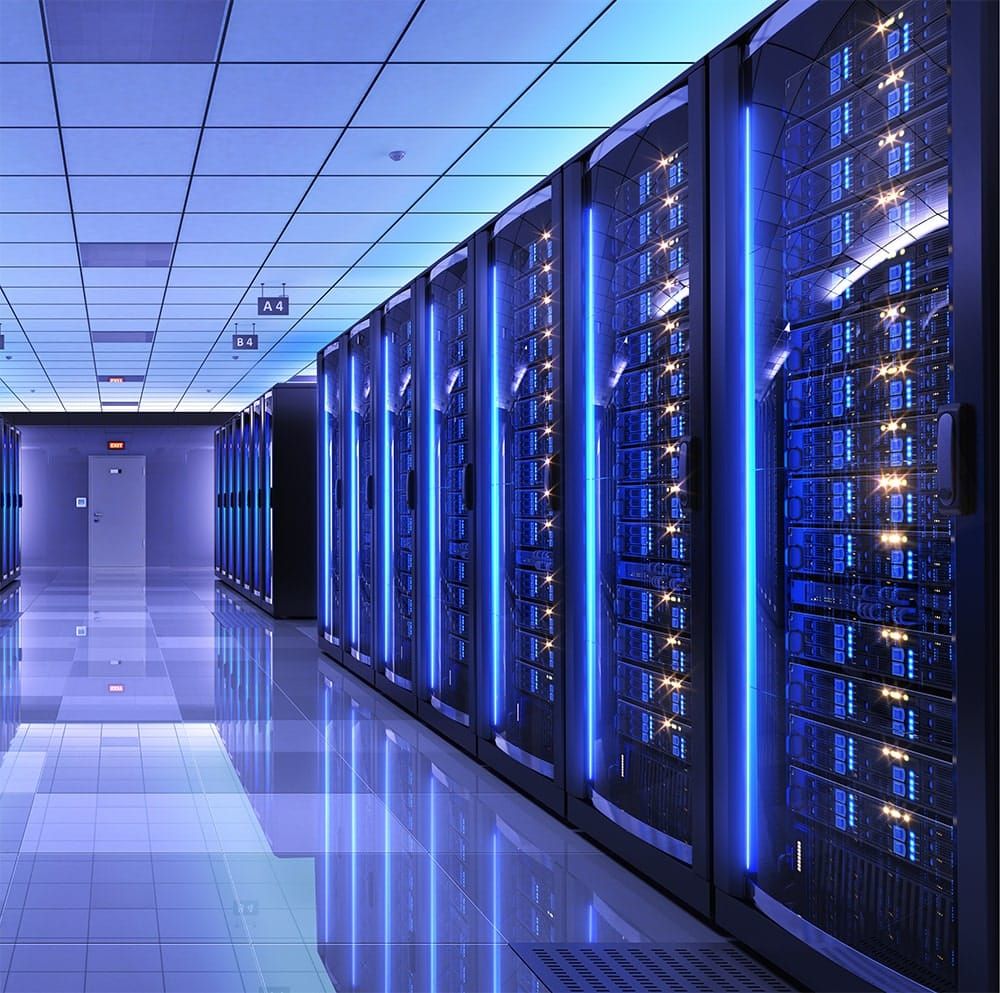
Overcoming Challenges in Modern Data Center Cooling
Despite the significant advancements in server cooling technologies, several challenges remain. These challenges must be addressed to ensure that data centers can continue to meet the growing demands of the digital era.
Energy Consumption and Cost
One of the most pressing issues is the high energy consumption associated with traditional cooling methods. Data centers can account for a substantial portion of a facility’s total energy usage, leading to high operational costs.
A. Inefficiencies in Traditional Systems: Conventional air cooling systems often require constant operation of large-scale HVAC units, which consume enormous amounts of energy.
B. Rising Energy Costs: As energy prices fluctuate, data centers face increased operational expenses, prompting the need for more efficient cooling technologies.
C. Sustainability Concerns: The environmental impact of high energy consumption has led to a demand for greener, more energy-efficient cooling solutions.
Integration with Existing Infrastructure
Implementing new cooling technologies in existing data centers can be challenging. Retrofitting older facilities with advanced cooling systems requires careful planning and significant investment.
A. Compatibility Issues: New cooling solutions must be compatible with existing server hardware and data center designs.
B. Disruption Risks: Upgrading cooling systems in operational data centers can cause disruptions that affect overall performance.
C. Cost of Transition: The financial investment required to transition from traditional to advanced cooling methods can be substantial, particularly for large-scale facilities.
Maintenance and Reliability
While advanced cooling technologies offer significant benefits, they also come with their own set of maintenance and reliability challenges.
A. Complexity of Systems: Advanced cooling solutions, such as liquid and immersion cooling, often involve intricate designs that require specialized maintenance procedures.
B. Risk of Leaks or Failures: Liquid-based systems must be meticulously managed to prevent leaks or system failures that could damage sensitive server components.
C. Training Requirements: Data center personnel need specialized training to operate and maintain these advanced systems, adding to overall costs.
Case Studies: Real-World Applications
Several prominent companies and research institutions have successfully implemented advanced server cooling solutions, demonstrating the real-world benefits of these technologies.
Case Study 1: Hyperscale Data Centers
Large-scale data centers operated by tech giants have increasingly turned to liquid cooling solutions to manage the high heat loads generated by densely packed servers. These centers have reported:
A. Enhanced Efficiency: Significant reductions in energy consumption through improved thermal management.
B. Cost Savings: Lower operational costs due to reduced reliance on traditional air conditioning systems.
C. Extended Hardware Lifespan: Improved cooling efficiency has led to fewer hardware failures and longer component life.
Case Study 2: Financial Institutions
Financial institutions, which require uninterrupted, high-performance computing capabilities, are turning to immersion cooling to ensure system stability. Their experiences include:
A. Robust Performance: Immersion cooling has enabled these institutions to maintain optimal performance even during peak computing periods.
B. Noise Reduction: The elimination of noisy fans and blowers has created a quieter working environment, which is particularly beneficial in office-adjacent data centers.
C. Scalability: Immersion cooling solutions have been easily scaled to accommodate the growing computational needs of these organizations.
Case Study 3: Edge Computing Deployments
In the realm of edge computing, smaller, decentralized data centers are leveraging localized cooling solutions. Benefits observed include:
A. Flexibility: Modular and adaptive cooling systems that can be easily tailored to diverse environmental conditions.
B. Reliability: Remote monitoring and control systems ensure that cooling remains consistent even in remote or harsh locations.
C. Cost-Effectiveness: Lower initial capital investment and operational costs, making them ideal for smaller-scale deployments.
The Role of Research and Development
Ongoing research and development (R&D) play a crucial role in the continuous improvement of server cooling systems. Industry leaders, academic institutions, and technology startups are investing heavily in R&D to overcome current limitations and push the boundaries of thermal management.
Areas of Focus in R&D
A. Material Science: Developing new materials with superior thermal conductivity to improve cooling efficiency.
B. System Integration: Creating systems that integrate seamlessly with existing data center infrastructures.
C. Automation and AI: Leveraging AI to monitor and optimize cooling performance in real time.
D. Sustainability: Researching eco-friendly cooling solutions that minimize environmental impact while maximizing efficiency.
Collaborative Efforts
Collaboration between different sectors is essential for the rapid advancement of cooling technologies. Public-private partnerships, joint ventures, and industry consortiums are fostering an environment of innovation where ideas can be shared and implemented on a global scale.
A. Government Initiatives: Many governments are offering incentives for research in energy-efficient technologies, including advanced cooling systems.
B. Industry Standards: Collaborative efforts are also leading to the establishment of industry-wide standards that ensure the compatibility and reliability of new cooling solutions.
C. Academic Partnerships: Universities and research institutions are playing a key role in developing theoretical frameworks and practical applications for next-generation cooling technologies.
Sustainability and Environmental Impact
With increasing global awareness about climate change, sustainability has become a central concern for data centers. Advanced server cooling systems contribute significantly to reducing the environmental footprint of data centers by enhancing energy efficiency and lowering carbon emissions.
Benefits for the Environment
A. Reduced Energy Usage: Innovations in cooling systems lead to lower energy consumption, which translates to reduced greenhouse gas emissions.
B. Optimized Resource Utilization: Efficient cooling methods allow data centers to operate at higher capacities without a proportional increase in resource usage.
C. Integration with Renewable Energy: As previously mentioned, coupling cooling technologies with renewable energy sources creates a more sustainable operation model.
Future Sustainability Trends
Looking ahead, the trend toward sustainable data center operations is expected to accelerate. Future developments may include:
A. Carbon-Neutral Data Centers: With the integration of renewable energy and advanced cooling solutions, data centers could achieve carbon-neutral or even carbon-negative operations.
B. Circular Economy Models: Emphasis on recycling and repurposing cooling systems and materials to reduce waste.
C. Green Certifications: More data centers will pursue green certifications as a mark of sustainability, boosting their market competitiveness and consumer trust.
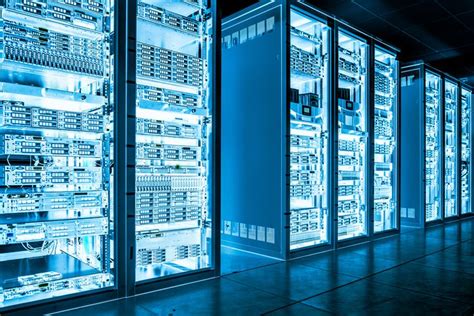
Challenges and Opportunities Ahead
While the advancements in server cooling technologies are impressive, there remain several challenges that the industry must address. These challenges, however, also present significant opportunities for innovation and market growth.
Key Challenges
A. Scalability: As data centers continue to expand, scaling advanced cooling solutions to accommodate increasing server densities remains a complex task.
B. Cost Barriers: The initial capital required for transitioning to cutting-edge cooling systems can be prohibitive, especially for smaller organizations.
C. Technological Integration: Ensuring that new cooling technologies integrate seamlessly with legacy systems without compromising performance or reliability.
Opportunities for Innovation
A. Modular Systems: Developing modular cooling solutions that can be easily expanded or reconfigured as data center needs evolve.
B. Smart Monitoring: Expanding the use of IoT devices and smart sensors to continuously monitor thermal performance and optimize cooling dynamically.
C. Customized Solutions: Creating tailored cooling systems designed for specific data center configurations and workloads, which can lead to more efficient operations overall.
Conclusion
The advancements in server cooling systems mark a significant turning point in the evolution of data center operations. From the early days of air cooling to the sophisticated liquid and immersion technologies used today, the journey has been one of relentless innovation and adaptation. These advanced cooling solutions not only enhance server performance and extend hardware lifespans but also contribute significantly to energy efficiency and sustainability.
As the digital landscape continues to expand, the importance of effective thermal management cannot be overstated. The integration of artificial intelligence, renewable energy sources, and advanced materials science is setting the stage for a new era in server cooling technology—one that promises to meet the ever-growing demands of high-performance computing while addressing the critical need for environmental sustainability.
In summary, the evolution of server cooling systems is a testament to human ingenuity and the relentless pursuit of efficiency. With ongoing research and collaborative efforts across the industry, the future of data center cooling looks brighter than ever. As we move forward, it will be essential for organizations to invest in these advanced technologies, not only to improve operational efficiency and reduce costs but also to play a vital role in the global movement towards sustainable technological progress.

